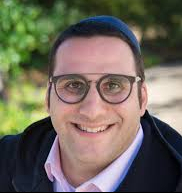The Guttenberg Press: Nezavim

As the days of Moshe’s life come to an end and we are in the final stretch of the Torah, the Torah focuses an enormous amount of ink on the covenant of the Jewish people. This everlasting covenant dates back to Abraham and has continued until our generation. In our Parsha, the Torah says:
וְאֶת־הָאָלָ֖ה הַזֹּֽאת׃
I make this covenant, with its sanctions, not with you alone,
כִּי֩ אֶת־אֲשֶׁ֨ר יֶשְׁנ֜וֹ פֹּ֗ה עִמָּ֙נוּ֙ עֹמֵ֣ד הַיּ֔וֹם לִפְנֵ֖י יְהוָ֣ה אֱלֹהֵ֑ינוּ וְאֵ֨ת אֲשֶׁ֥ר אֵינֶ֛נּוּ פֹּ֖ה עִמָּ֥נוּ הַיּֽוֹם׃
but both with those who are standing here with us this day before Hashem our God and with those who are not with us here this day.
Rashi, Ibn Ezra, Ramban, Sforno, and others explain that this Pasuk refers to all future generations, even those who aren’t born yet. They are alluding to the mystical idea that all souls (both born and not born) of the Jewish people stood at Sinai.
Throughout Jewish history, including today, there are those who are “here with us” and those “who aren’t.” At Hebrew Academy we say, whether at home or in school, we are all Warriors for education and we are all HAConnectEd.
Thought to Ponder:
Who else can be part of the phrase “those who are not with us here this day?"
The name of our Parsha is נִצָּבִ֤ים which means standing, yet immediately the Torah changes and uses the word עֹמֵ֣ד which is also translated as standing. What is the difference between נִצָּבִ֤ים and עֹמֵ֣ד?

